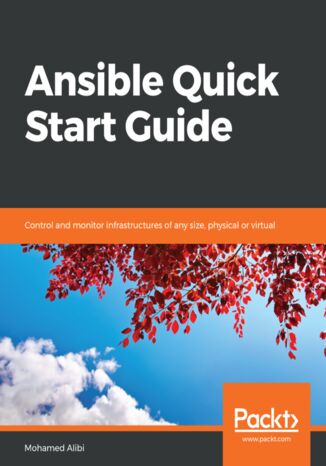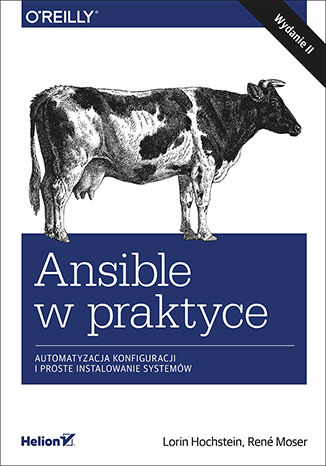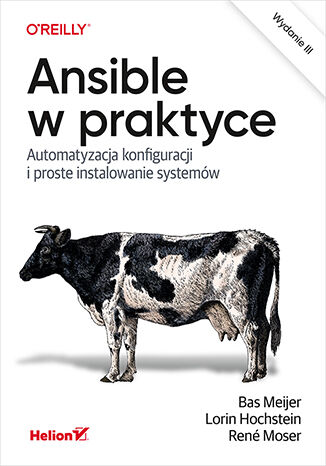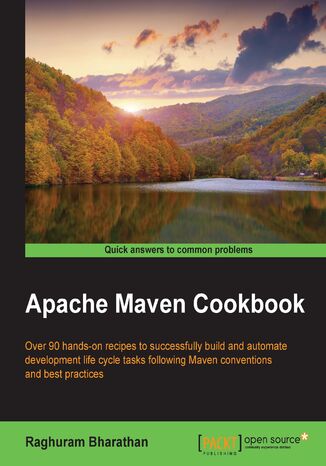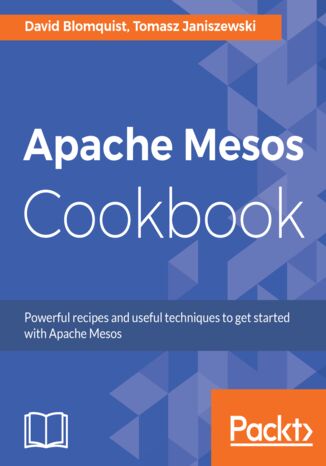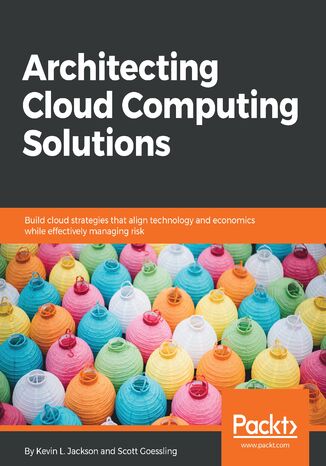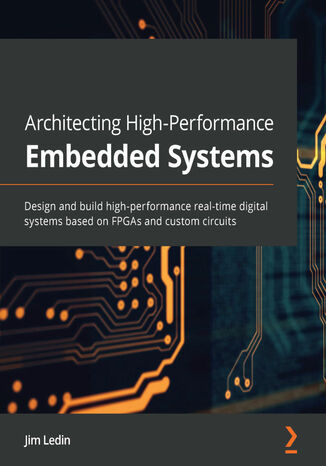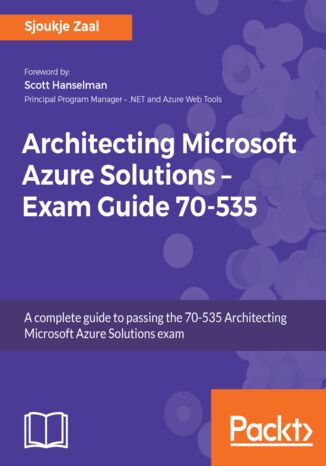Kategorien
E-Books
-
Wirtschaft
- Bitcoin
- Geschäftsfrau
- Coaching
- Controlling
- E-Business
- Ökonomie
- Finanzen
- Börse und Investitionen
- Persönliche Kompetenzen
- Computer im Büro
- Kommunikation und Verhandlungen
- Kleines Unternehmen
- Marketing
- Motivation
- Multimedia-Training
- Immobilien
- Überzeugung und NLP
- Steuern
- Sozialpolitik
- Handbȕcher
- Präsentationen
- Führung
- Public Relation
- Berichte, Analysen
- Geheimnis
- Social Media
- Verkauf
- Start-up
- Ihre Karriere
- Management
- Projektmanagement
- Personal (HR)
-
Für Kinder
-
Für Jugendliche
-
Bildung
-
Enzyklopädien, Wörterbücher
-
E-Presse
- Architektura i wnętrza
- Sicherheit und Gesundheit am Arbeitsplatz
- Biznes i Ekonomia
- Haus und Garten
- E-Business
- Ekonomia i finanse
- Esoterik
- Finanzen
- Persönliche Finanzen
- Unternehmen
- Fotografie
- Informatik
- HR und Gehaltsabrechnung
- Frauen
- Computer, Excel
- Buchhaltung
- Kultur und Literatur
- Wissenschaftlich und akademisch
- Umweltschutz
- meinungsbildend
- Bildung
- Steuern
- Reisen
- Psychologie
- Religion
- Landwirtschaft
- Buch- und Pressemarkt
- Transport und Spedition
- Gesundheit und Schönheit
-
Geschichte
-
Informatik
- Office-Programme
- Datenbank
- Bioinformatik
- IT Branche
- CAD/CAM
- Digital Lifestyle
- DTP
- Elektronik
- Digitale Fotografie
- Computergrafik
- Spiele
- Hacking
- Hardware
- IT w ekonomii
- Wissenschaftliche Pakete
- Schulbücher
- Computergrundlagen
- Programmierung
- Mobile-Programmierung
- Internet-Server
- Computernetzwerke
- Start-up
- Betriebssysteme
- Künstliche Inteligenz
- Technik für Kinder
- Webmaster
-
Andere
-
Fremdsprachen lernen
-
Kultur und Kunst
-
Lektüre
-
Literatur
- Anthologien
- Ballade
- Biografien und Autobiografien
- Für Erwachsene
- Drama
- Tagebücher, Memoiren, Briefe
- Epos
- Essay
- Science Fiction
- Felietonys
- Fiktion
- Humor, Satire
- Andere
- Klassisch
- Krimi
- Sachbücher
- Belletristik
- Mity i legendy
- Nobelpreisträger
- Kurzgeschichten
- Gesellschaftlich
- Okultyzm i magia
- Erzählung
- Erinnerungen
- Reisen
- Gedicht
- Poesie
- Politik
- Populärwissenschaftlich
- Roman
- Historischer Roman
- Prosa
- Abenteuer
- Journalismus
- Reportage
- Romans i literatura obyczajowa
- Sensation
- Thriller, Horror
- Interviews und Erinnerungen
-
Naturwissenschaften
-
Sozialwissenschaften
-
Schulbücher
-
Populärwissenschaft und akademisch
- Archäologie
- Bibliotekoznawstwo
- Filmwissenschaft
- Philologie
- Polnische Philologie
- Philosophie
- Finanse i bankowość
- Erdkunde
- Wirtschaft
- Handel. Weltwirtschaft
- Geschichte und Archäologie
- Kunst- und Architekturgeschichte
- Kulturwissenschaft
- Linguistik
- Literaturwissenschaft
- Logistik
- Mathematik
- Medizin
- Geisteswissenschaften
- Pädagogik
- Lehrmittel
- Populärwissenschaftlich
- Andere
- Psychologie
- Soziologie
- Theatrologie
- Teologie
- Theorien und Wirtschaftswissenschaften
- Transport i spedycja
- Sportunterricht
- Zarządzanie i marketing
-
Handbȕcher
-
Spielanleitungen
-
Professioneller und fachkundige Leitfaden
-
Jura
- Sicherheit und Gesundheit am Arbeitsplatz
- Geschichte
- Verkehrsregeln. Führerschein
- Rechtswissenschaften
- Gesundheitswesen
- Allgemeines. Wissenskompendium
- akademische Bücher
- Andere
- Bau- und Wohnungsrecht
- Zivilrecht
- Finanzrecht
- Wirtschaftsrecht
- Wirtschafts- und Handelsrecht
- Strafrecht
- Strafrecht. Kriminelle Taten. Kriminologie
- Internationales Recht
- Internationales und ausländisches Recht
- Gesundheitsschutzgesetz
- Bildungsrecht
- Steuerrecht
- Arbeits- und Sozialversicherungsrecht
- Öffentliches, Verfassungs- und Verwaltungsrecht
- Familien- und Vormundschaftsrecht
- Agrarrecht
- Sozialrecht, Arbeitsrecht
- EU-Recht
- Industrie
- Agrar- und Umweltschutz
- Wörterbücher und Enzyklopädien
- Öffentliche Auftragsvergabe
- Management
-
Führer und Reisen
- Afrika
- Alben
- Südamerika
- Mittel- und Nordamerika
- Australien, Neuseeland, Ozeanien
- Österreich
- Asien
- Balkan
- Naher Osten
- Bulgarien
- China
- Kroatien
- Tschechische Republik
- Dänemark
- Ägypten
- Estland
- Europa
- Frankreich
- Berge
- Griechenland
- Spanien
- Niederlande
- Island
- Litauen
- Lettland
- Mapy, Plany miast, Atlasy
- Miniführer
- Deutschland
- Norwegen
- Aktive Reisen
- Polen
- Portugal
- Andere
- Przewodniki po hotelach i restauracjach
- Russland
- Rumänien
- Slowakei
- Slowenien
- Schweiz
- Schweden
- Welt
- Türkei
- Ukraine
- Ungarn
- Großbritannien
- Italien
-
Psychologie
- Lebensphilosophien
- Kompetencje psychospołeczne
- zwischenmenschliche Kommunikation
- Mindfulness
- Allgemeines
- Überzeugung und NLP
- Akademische Psychologie
- Psychologie von Seele und Geist
- Arbeitspsychologie
- Relacje i związki
- Elternschafts- und Kinderpsychologie
- Problemlösung
- Intellektuelle Entwicklung
- Geheimnis
- Sexualität
- Verführung
- Aussehen ind Image
- Lebensphilosophien
-
Religion
-
Sport, Fitness, Diäten
-
Technik und Mechanik
Hörbücher
-
Wirtschaft
- Bitcoin
- Geschäftsfrau
- Coaching
- Controlling
- E-Business
- Ökonomie
- Finanzen
- Börse und Investitionen
- Persönliche Kompetenzen
- Kommunikation und Verhandlungen
- Kleines Unternehmen
- Marketing
- Motivation
- Immobilien
- Überzeugung und NLP
- Steuern
- Sozialpolitik
- Handbȕcher
- Präsentationen
- Führung
- Public Relation
- Geheimnis
- Social Media
- Verkauf
- Start-up
- Ihre Karriere
- Management
- Projektmanagement
- Personal (HR)
-
Für Kinder
-
Für Jugendliche
-
Bildung
-
Enzyklopädien, Wörterbücher
-
E-Presse
-
Geschichte
-
Informatik
-
Andere
-
Fremdsprachen lernen
-
Kultur und Kunst
-
Lektüre
-
Literatur
- Anthologien
- Ballade
- Biografien und Autobiografien
- Für Erwachsene
- Drama
- Tagebücher, Memoiren, Briefe
- Epos
- Essay
- Science Fiction
- Felietonys
- Fiktion
- Humor, Satire
- Andere
- Klassisch
- Krimi
- Sachbücher
- Belletristik
- Mity i legendy
- Nobelpreisträger
- Kurzgeschichten
- Gesellschaftlich
- Okultyzm i magia
- Erzählung
- Erinnerungen
- Reisen
- Poesie
- Politik
- Populärwissenschaftlich
- Roman
- Historischer Roman
- Prosa
- Abenteuer
- Journalismus
- Reportage
- Romans i literatura obyczajowa
- Sensation
- Thriller, Horror
- Interviews und Erinnerungen
-
Naturwissenschaften
-
Sozialwissenschaften
-
Populärwissenschaft und akademisch
- Archäologie
- Philosophie
- Wirtschaft
- Handel. Weltwirtschaft
- Geschichte und Archäologie
- Kunst- und Architekturgeschichte
- Kulturwissenschaft
- Literaturwissenschaft
- Mathematik
- Medizin
- Geisteswissenschaften
- Pädagogik
- Lehrmittel
- Populärwissenschaftlich
- Andere
- Psychologie
- Soziologie
- Teologie
- Zarządzanie i marketing
-
Handbȕcher
-
Professioneller und fachkundige Leitfaden
-
Jura
-
Führer und Reisen
-
Psychologie
- Lebensphilosophien
- zwischenmenschliche Kommunikation
- Mindfulness
- Allgemeines
- Überzeugung und NLP
- Akademische Psychologie
- Psychologie von Seele und Geist
- Arbeitspsychologie
- Relacje i związki
- Elternschafts- und Kinderpsychologie
- Problemlösung
- Intellektuelle Entwicklung
- Geheimnis
- Sexualität
- Verführung
- Aussehen ind Image
- Lebensphilosophien
-
Religion
-
Sport, Fitness, Diäten
-
Technik und Mechanik
Videokurse
-
Datenbank
-
Big Data
-
Biznes, ekonomia i marketing
-
Cybersicherheit
-
Data Science
-
DevOps
-
Für Kinder
-
Elektronik
-
Grafik / Video / CAX
-
Spiele
-
Microsoft Office
-
Entwicklungstools
-
Programmierung
-
Persönliche Entwicklung
-
Computernetzwerke
-
Betriebssysteme
-
Softwaretest
-
Mobile Geräte
-
UX/UI
-
Web development
-
Management
Podcasts
- E-Books
- Informatik
- Betriebssysteme
Betriebssysteme
In dieser Kategorie unserer Online-Bibliothek finden Sie Bücher zu Betriebssystemen. Einige von ihnen sind eine Einführung in Software wie Windows, Linux oder Android. Andere befassen sich mit technischeren Fragen bezüglich der Konfiguration dieser Systeme und der auf ihnen verwendeten Tools, wie z. B. Ansible.
Ansible Quick Start Guide. Control and monitor infrastructures of any size, physical or virtual
Configuration Management (CM) tools help administrators reduce their workload. Ansible is one of the best Configuration Management tools, and can act as an orchestrator for managing other CMs. This book is the easiest way to learn how to use Ansible as an orchestrator and a Configuration Management tool. With this book, you will learn how to control and monitor computer and network infrastructures of any size,physical or virtual. You will begin by learning about the Ansible client-server architecture. To get started, you will set up and configure an Ansible server. You will then go through the major features of Ansible: Playbook and Inventory. Then, we will look at Ansible systems and network modules. You will then use Ansible to enable infrastructure automated configuration management, followed by best practices for using Ansible roles and community modules. Finally, you will explore Ansible features such as Ansible Vault, Ansible Containers, and Ansible plugins.
Ansible w praktyce. Automatyzacja konfiguracji i proste instalowanie systemów. Wydanie II
Automatyzacja zarządzania konfiguracją i proste instalowanie systemów Zarządzanie konfiguracją oprogramowania w systemach sieciowych jest niebanalnym zadaniem. Nawet zwykła aktualizacja czy wdrożenie nowego oprogramowania mogą się skończyć katastrofą, zwłaszcza w przypadku serwerów pracujących pod kontrolą systemów Linux czy Unix. Konieczność pilnowania ustawień w wielu różnych plikach konfiguracyjnych, z których każdy służy innemu elementowi, sprawia, że problemy mogą sprawiać nawet zasadniczo nieskomplikowane czynności - chyba że konfiguracja i wdrażanie oprogramowania w systemie zostaną zautomatyzowane za pomocą odpowiedniego narzędzia, na przykład Ansible. Istnieje wiele narzędzi do zarządzania konfiguracją oprogramowania. Spośród nich Ansible wyróżnia się szczególnymi zaletami: ma minimalne rozmiary, nie wymaga instalowania czegokolwiek na serwerach i jest proste w użyciu. Dzięki tej książce szybko nauczysz się korzystać z najnowszej wersji Ansible do instalowania nowego kodu aplikacji w środowisku produkcyjnym czy też do lepszego i prostszego zarządzania rozbudowanymi systemami. Zapoznasz się między innymi z oprogramowaniem Ansible Tower, a także dowiesz się, jak skutecznie zarządzać komputerami z systemem Windows i sprzętem sieciowym. Ten niezwykle praktyczny podręcznik powinien stale być pod ręką każdego administratora systemu, wdrożeniowca i programisty! W tej książce między innymi: Ansible a inne narzędzia do zarządzania konfiguracją systemów Scenariusze w języku YAML Testowanie i skalowanie scenariuszy Techniki wdrażania aplikacji w systemie Automatyzacja konfigurowania urządzeń sieciowych Wdrażanie aplikacji w chmurze Ansible: skuteczne narzędzie najlepszych adminów! Lorin Hochstein jest starszym inżynierem oprogramowania w Netfliksie, w zespole zajmującym się inżynierią chaosu. Wcześniej pracował jako inżynier w SendGrid Labs, główny architekt usług chmurowych w Nimbis Services. Obronił doktorat w dziedzinie informatyki na Uniwersytecie Maryland. Rene Moser jest inżynierem systemów. Od lat angażuje się w projekty open source takie jak ASF CloudStack. Od 2016 roku jest członkiem projektu Ansible Core. Ceni sobie proste systemy, które łatwo skalować. Mieszka w Szwajcarii z rodziną.
Ansible w praktyce. Automatyzacja konfiguracji i proste instalowanie systemów. Wydanie III
Bas Meijer, Lorin Hochstein, René Moser
Ansible służy do automatyzacji wdrożeń oprogramowania i zarządzania jego konfiguracjami. Inżynierowie cenią ten framework za minimalne rozmiary, brak konieczności instalowania czegokolwiek na serwerach i prostotę użytkowania. Oferuje on proste i bardzo przydatne funkcje przeznaczone do automatyzacji wielowarstwowych środowisk, przydaje się też do obsługi ciągłej integracji i ciągłego wdrażania oprogramowania (CI/CD) bez żadnego przestoju. Może służyć do różnych celów: przygotowania infrastruktury jako kodu, wdrożeń aplikacji czy automatyzacji codziennych, czasochłonnych zadań administracyjnych. Ta książka jest przeznaczona dla programistów i administratorów, którzy poszukują wydajnej metody zarządzania systemami. Pokazano w niej, w jaki sposób działa Ansible i jak należy przygotować go do pracy. Omówiono sposoby tworzenia scenariuszy (są to skrypty do zarządzania konfiguracją), zasady zarządzania zewnętrznymi serwerami, a także zaprezentowano najciekawsze funkcjonalności tego oprogramowania: wbudowane deklaratywne moduły . W tym wydaniu uwzględniono zmiany wynikające z dynamicznego rozwoju Ansible, dodano też kilka rozdziałów poświęconych kontenerom, platformie Molecule, kolekcjom Ansible, obrazom i infrastrukturze chmurowej. Wszystkie kody zostały zaktualizowane, a całość została wzbogacona o praktyczne wskazówki dotyczące dobrych praktyk programistycznych na platformach do weryfikowania kodu. W książce: zarządzanie konfiguracją i wdrożeniami systemów za pomocą Ansible dobre praktyki pracy z Ansible formaty kolekcji, moduły i wtyczki generowanie obrazów kontenerów i instancji chmurowych tworzenie infrastruktury chmurowej automatyzacja procesów CI/CD w środowisku programistycznym platforma Ansible Automation w metodyce DevOps Minimalne rozmiary, prostota i wyjątkowa skuteczność — poznaj Ansible!
Apache Mesos Cookbook. Efficiently handle and manage tasks in a distributed environment
David Blomquist, Tomasz Janiszewski
Apache Mesos is open source cluster sharing and management software. Deploying and managing scalable applications in large-scale clustered environments can be difficult, but Apache Mesos makes it easier with efficient resource isolation and sharing across application frameworks.The goal of this book is to guide you through the practical implementation of the Mesos core along with a number of Mesos supported frameworks. You will begin by installing Mesos and then learn how to configure clusters and maintain them. You will also see how to deploy a cluster in a production environment with high availability using Zookeeper.Next, you will get to grips with using Mesos, Marathon, and Docker to build and deploy a PaaS. You will see how to schedule jobs with Chronos. We’ll demonstrate how to integrate Mesos with big data frameworks such as Spark, Hadoop, and Storm. Practical solutions backed with clear examples will also show you how to deploy elastic big data jobs. You will find out how to deploy a scalable continuous integration and delivery system on Mesos with Jenkins. Finally, you will configure and deploy a highly scalable distributed search engine with ElasticSearch.Throughout the course of this book, you will get to know tips and tricks along with best practices to follow when working with Mesos.
Kevin L. Jackson, Scott Goessling
Cloud adoption is a core component of digitaltransformation. Scaling the IT environment,making it resilient, and reducing costs arewhat organizations want. Architecting CloudComputing Solutions presents and explainscritical cloud solution design considerationsand technology decisions required tobe made for deploying the right cloudservice and deployment models,based on your business andtechnology service requirements.This book starts with the fundamentalsof cloud computing and its architecturalconcepts. It then walks you throughcloud service models (IaaS, PaaS, andSaaS), deployment models (public,private, community, and hybrid)and implementation options(enterprise, MSP, and CSP) to explainand describe the key considerations andchallenges organizations face during cloudmigration. Later, this book delves into how toleverage DevOps, Cloud-Native, and serverlessarchitectures in your cloud environmentand presents industry best practices forscaling your cloud environment. Finally,this book addresses in depth how tomanage essential cloud technologyservice components, such as data storage,security controls, and disaster recovery.By the end of this book, you will havemastered all the design considerations andoperational trades required to adopt cloudservices, no matter which cloud serviceprovider you choose.
Modern digital devices used in homes, cars, and wearables contain highly sophisticated computing capabilities composed of embedded systems that generate, receive, and process digital data streams at rates up to multiple gigabits per second. This book will show you how to use Field Programmable Gate Arrays (FPGAs) and high-speed digital circuit design to create your own cutting-edge digital systems.Architecting High-Performance Embedded Systems takes you through the fundamental concepts of embedded systems, including real-time operation and the Internet of Things (IoT), and the architecture and capabilities of the latest generation of FPGAs. Using powerful free tools for FPGA design and electronic circuit design, you’ll learn how to design, build, test, and debug high-performance FPGA-based IoT devices. The book will also help you get up to speed with embedded system design, circuit design, hardware construction, firmware development, and debugging to produce a high-performance embedded device – a network-based digital oscilloscope. You’ll explore techniques such as designing four-layer printed circuit boards with high-speed differential signal pairs and assembling the board using surface-mount components.By the end of the book, you’ll have a solid understanding of the concepts underlying embedded systems and FPGAs and will be able to design and construct your own sophisticated digital devices.
Architecting Microsoft Azure Solutions: Exam Guide 70-535 will get Azure architects and developers up-to-date with the latest updates on Azure from an architecture and design perspective. The book includes all the topics that are still relevant from the previous 70-534 exam, and is updated with latest topics covered, including Artificial Intelligence, IoT, and architecture styles.This exam guide is divided into six parts, where the first part will give you a good understanding of how to design a compute infrastructure. It also dives into designing networking and data implementations. You will learn about designing solutions for Platform Service and operations. Next, you will be able to secure your resources and data, as well as design a mechanism for governance and policies. You will also understand the objective of designing solutions for Platform Services, by covering Artificial Intelligence, IoT, media services, and messaging solution concepts. Finally, you will cover the designing for operations objective. This objective covers application and platform monitoring, as well as designing alerting strategies and operations automation strategies. By the end of the book, you’ll have met all of the exam objectives, and will have all the information you need to ace the 70-535 exam. You will also have become an expert in designing solutions on Microsoft Azure.

